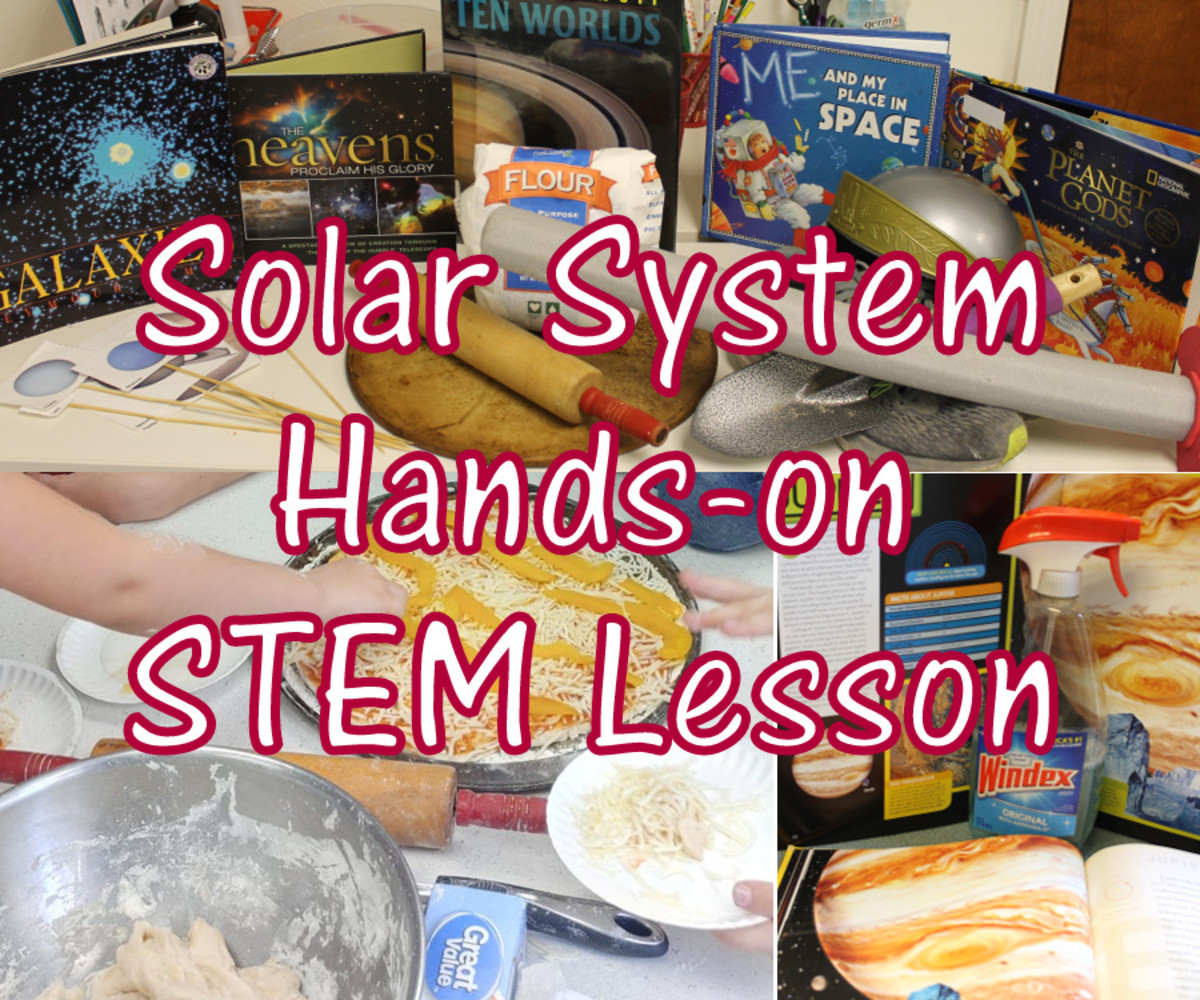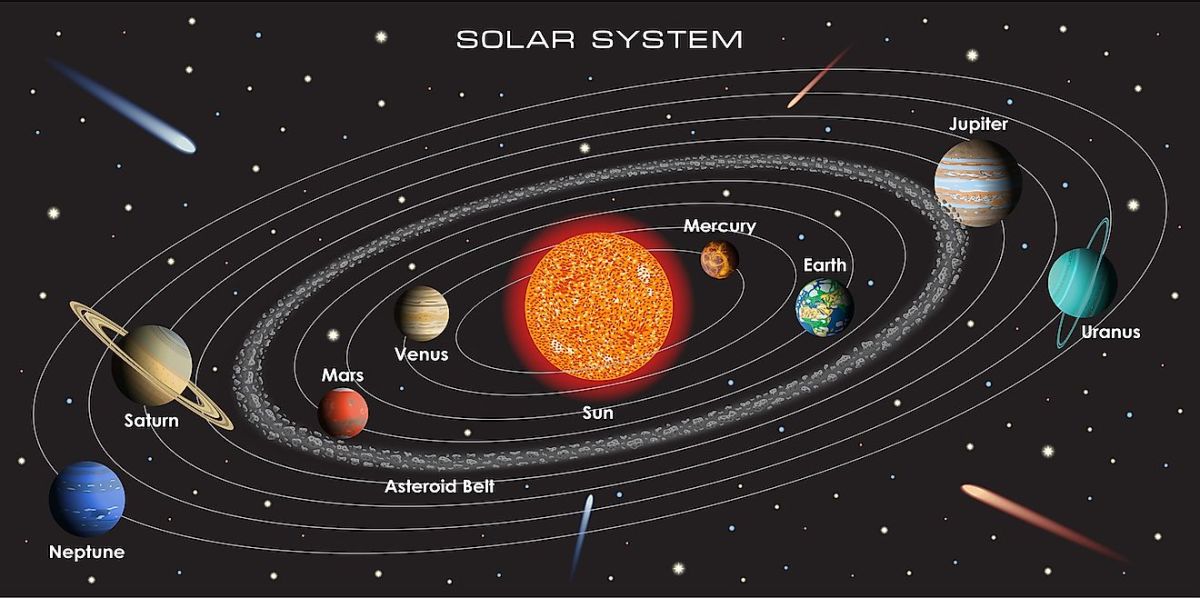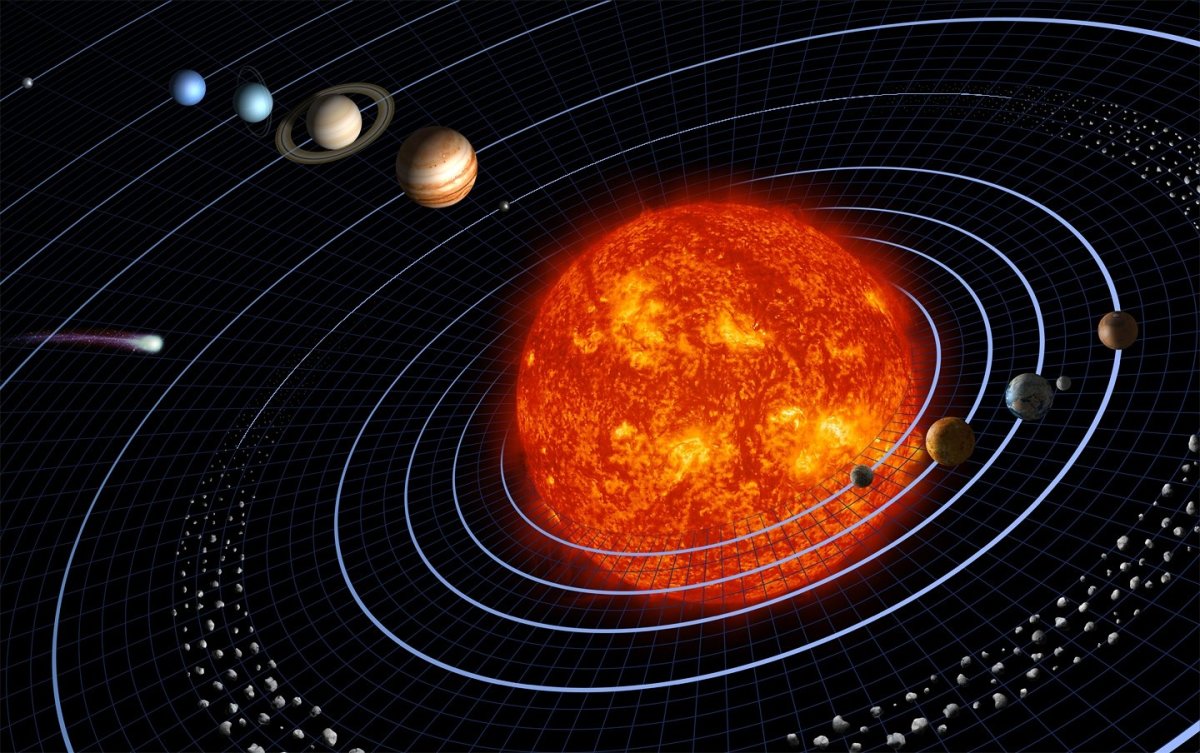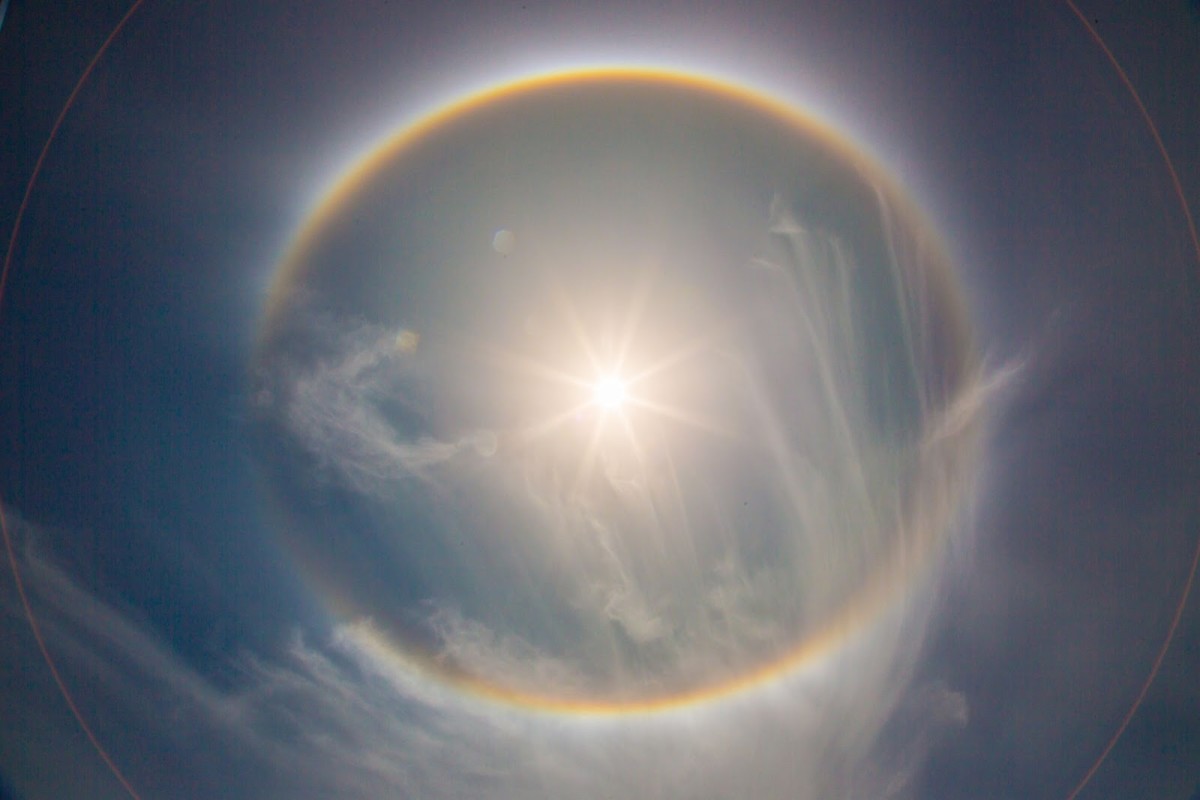Our Solar System
Video of this artcle
The Universe!
The universe is massive. So massive we cant even see most of it. So big scientist who study it aren't even sure where it all is because its so far away.
In this vastness of space there is our galaxy. The Milky Way.
The Milky Way is where we are.
Because we are inside the Milky way when we look out at the night sky we can only see a tiny amount of the stars around us.
At the centre of the Milky Way scientists believe this a black hole. Beyond this a spiraling arms - we are in one of these.
Sun at the Centre
Our Solar system is made up of the sun at the centre and all of the things such as planets, asteroids and meteors that orbit (or travel around) the sun. We are going to focus on the planets.
The planets that orbit the sun all travel around it at different speeds. The closer the planet is to the sun the faster it moves around it and the further away it is from the sun the slower it moves around it.
We are on Earth and Earth is the third closest planet to the sun. It takes Earth around 365 days to travel around the sun which is why a year (on Earth at least) is around 365 days long.
The sun (which is basically a giant star which is basically a giant ball of fire) is the centre of our solar system because everything else travels around it. All of the planets and other objects in our solar system orbit around the sun because of a force called gravity.
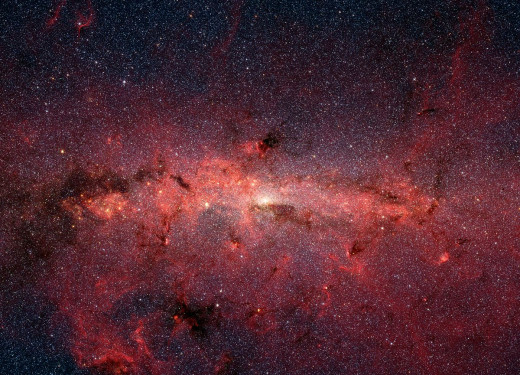
Travel around the Sun
On Earth gravity is what stops us from floating into space by keeping us pulled to the ground.
In our Solar system the suns gravity keeps objects in space such as planets travelling around the sun instead of getting lost and floating off into space.
As well as travelling around the sun planets spin around too – so parts of the earth are sometimes facing the sun and getting all of the suns light but as earth spins that part of the earth stops facing the sun and starts to look at other parts of space again. This is happening all the time which is why the sun will be over in one side of the sky in the morning and another side of the sky in the evening and then at night we can't see the sun at all any more because we are facing away from it and it becomes darker. So the earth spinning is why we have day and night.

The Planets
Around the sun are the 8 planets of our solar system (although some scientists would argue there are more). The either we are sure are planets can we split into two categories; the terrestrial planets and the gas giants.
The terrestrial planets are the four planets closest to the sun and the surface of these planets are rocky land. So in order starting from the planet closest to the sun..
We have Mercury.
Mercury is the closest planet to the sun and it is also the smallest of the planets.
Then there is Venus – Venue is the hottest planet in our solar system
Next is Earth which is where we are. It is a terrestrial planet which is covered in water.
Mars – this is known as the red planet. And it is where the mars rover (a device built on earth and sent to mars to see what it was like) landed
After these there are the 4 planets furthest from the sun known as the gas giants. These planets are made up of mostly gas with a rocky core and are the 4 biggest planets in our solar system.
So after Mars we have Jupiter. This is the biggest planet in our solar system. It is over 300 times bigger than earth – so 300 planet earths could fit inside the size of Jupiter.
Next is Saturn – This is the ringed planet because it has rings around it made up of ice and rocks which orbit it.
Then this is Uranus which is the coldest planet and is known to have been as cold as minus 244 Celsius.
And finally we have Neptune which is the furthest planet from the sun and because it is so far from the sun it orbits the sun the slowest and so it takes 165 earth years to orbit the sun. and it only take Earth 1 year.



